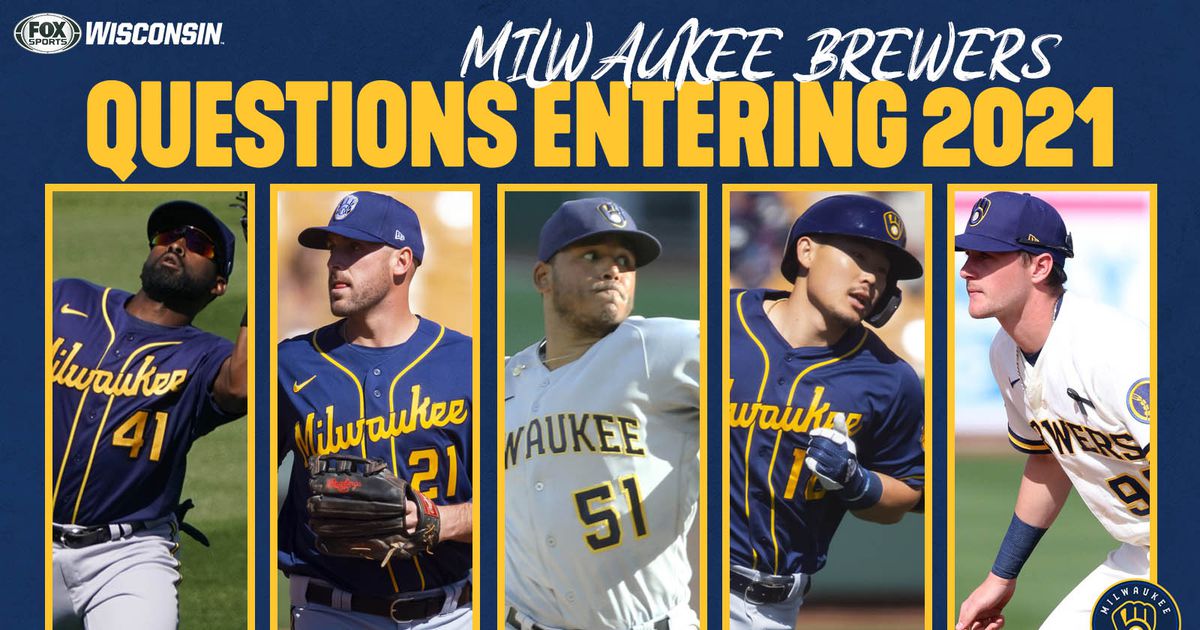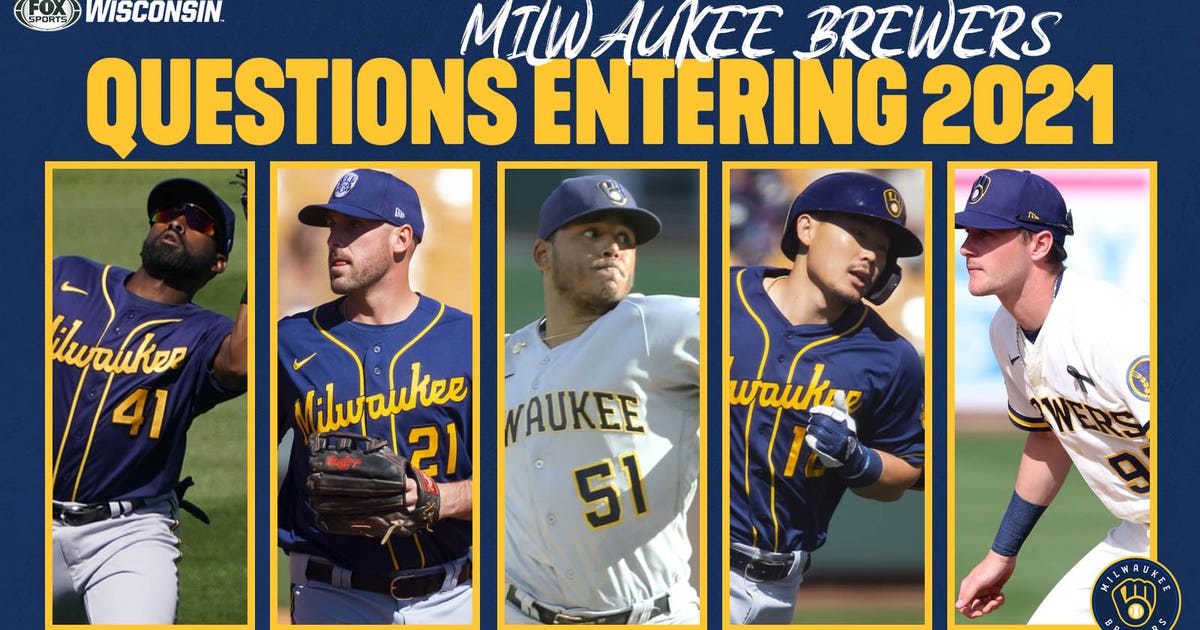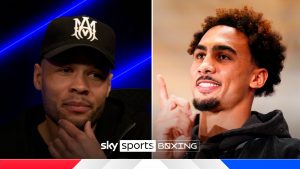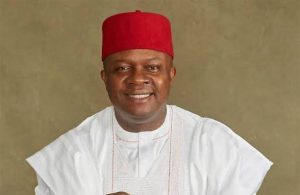Brewers questions entering the 2021 season


Will the plan at third base work?
After an attempt to bring in a full-time third sacker failed when Justin Turner decided to return to the Los Angeles Dodgers, things have taken on quite a different approach for the Brewers. It appears as though three players will split up the position. Travis Shaw, who was signed to a minor-league contract but eventually put on the 40-man roster, figures to get the brunt of the starts against right-handed pitching. His last time with the Brewers did not end well, batting .157 with seven home runs in 270 plate appearance in 2019. He didn’t exactly get back to form in Toronto in 2020 (.239 with six homers in 180 PA), but it’s a step up from where he was. Can he climb even higher? Daniel Robertson would like a chance at being a full-time player rather than in a utility role, but unless he can grab the bull by the horns he’s expected to once again play where — and when — needed. Then there’s Orlando Arcia, trying to learn a new position while also likely playing some shortstop. His bat plays more at short than third, though, and his struggles hitting during this spring haven’t helped. There’s not a ton of reason for optimism here but the Brewers certainly hope it will work itself out.
Is Freddy Peralta finally ready to be a full-time starting pitcher?
Peralta came up as a starter in 2018, making starts in 14 of 16 appearances, but in 2019-20 he pitched in 54 games with just nine starts — and just once last season. There’s no denying Peralta has the tools to be a good starter, and a potentially dominating one. In his major-league career he’s allowed just 7.4 hits per nine inning and has struck out 12.2 batters per nine. But his success has largely come out of the bullpen. In 23 career starts, spanning 112 1/3 innings, he has a 5.45 ERA, 1.318 WHIP and 11.2 K/9. In 47 relief appearances, over 80 1/3 innings, he has a 3.59 ERA, 1.232 WHIP and 13.2 K/9. But Peralta turns just 25 on June 4 and Milwaukee clearly believes in him, not only by giving him another shot at the rotation but also to the contract extension they gave him which runs through 2024 (with team options in each of the next two years). If Peralta can harness his talent, a 1-2-3 of him alongside Brandon Woodruff and Corbin Burnes would be a pretty tough group to have to face in a short playoff series.
Can Keston Hiura successfully make the transition to first base?
We hate to repeat ourselves, but it’s very rare these days for someone of Hiura’s size to be an everyday first baseman. Here’s what we wrote in our spring training questions: “He’s 6-foot, 202 pounds according to baseball-reference (which might be a bit of a stretch). According to the site’s Stathead, in the past 15 years only three players listed at 6-foot or shorter and 202 pounds or less played 100+ games at first base (note: b-r uses the same height and weight every year for each player, so this is certainly not perfect but gives a good idea at how often players of Hiura’s physical stature man first base). Those three are Nomar Garciaparra (6-0, 165; 118 games with 117 starts) in 2006, Nick Swisher (6-0, 195; 112 games, 101 starts) in 2013 and Sean Rodriguez (6-0, 199; 102 games, 12 starts) in 2015.” Hiura might not have the height (or weight) of a normal first baseman but his athleticism should serve him well. Plus, there’s not much of a Plan B for the Brewers at the position. Shaw said he hasn’t been playing there (and Hiura has been using his glove). Daniel Vogelbach figures to be the backup but can a guy usually pegged for designated hitter be an everyday first baseman, especially with Milwaukee’s commitment to defense?
How will the four starters for three outfield spots work out?
The recent addition of Jackie Bradley Jr. might have raised an eyebrow among some fans. After all, Milwaukee’s outfield was set with Christian Yelich in left, Lorenzo Cain in center and Avisail Garcia in right. It’s not like Bradley is some backup; he’s been a starter since 2014. In 2019, he juggled Ryan Braun (144 games, 508 PA), Cain (148/623), Yelich (130/580) and Ben Gamel (134/356), not to mention late-season call-up Trent Grisham (51/183). So it seems possible to have everyone over 400 plate appearances. But will everyone remain happy? Manager Craig Counsell doesn’t seem to be worried about it. (Of course, winning games always helps.)
Will the hitters rebound?
We’re about to find out if the shortened 2020 season was just an anomaly or if several Brewers hitters are on the downswing. Milwaukee’s offense was one of the worst in the National League last year. In the 60 games, the Brewers batted .223 with 247 runs – both 12th overall in the NL – with a .313 on-base percentage and .389 slugging percentage, the latter two each ranking 11th in the league. In 2019, the team hit .246/.329/.438, which ranked ninth, fifth and seventh in the NL. Several Brewers hitters saw their slash line numbers plummet. Most notably Yelich, who ended up hitting .205/.356/.430 with a career-worst 30.8 K%. Omar Narvaez, who had the reputation of having a good bat, finished at .176/.294/.269. Garcia .238/.333/.326. Hiura .212/.297/.410 with a team-worst 34.8 K%. All of these batters are key in Milwaukee’s lineup. A turnaround from each would go a long way in another postseason run.
When will the kids arrive – and where will they play?
A few prospects stood out in spring training, none of whom made the team but potentially could be up with the big club later in 2021. Garrett Mitchell, the team’s first-round pick in 2021, made quite the impression in his first camp with the Brewers. He’ll get some seasoning in the minors but even then … where would he play if recalled? The outfield is already jammed with four starters. But Milwaukee found a way to get Grisham playing time in 2019 even before Yelich was injured. There’s always a way. Brice Turang also looked good and could be a year away, but it’s not like Milwaukee is solid at short. Arcia lost out his job to Luis Urias, who has yet to prove he can be a solid everyday player. Most realistically, however, are the pitchers. It’s expected that teams might go through more pitchers than usual thanks to going from a 60-game schedule back to a full 162. A pair of young left-handers could make their debuts in Milwaukee this season: Aaron Ashby, who was very impressive this spring with his deceptive delivery, and former first-round pick Ethan Small. Right-hander Alec Bettinger, a 10th-round pick in 2017, is another possibility.







